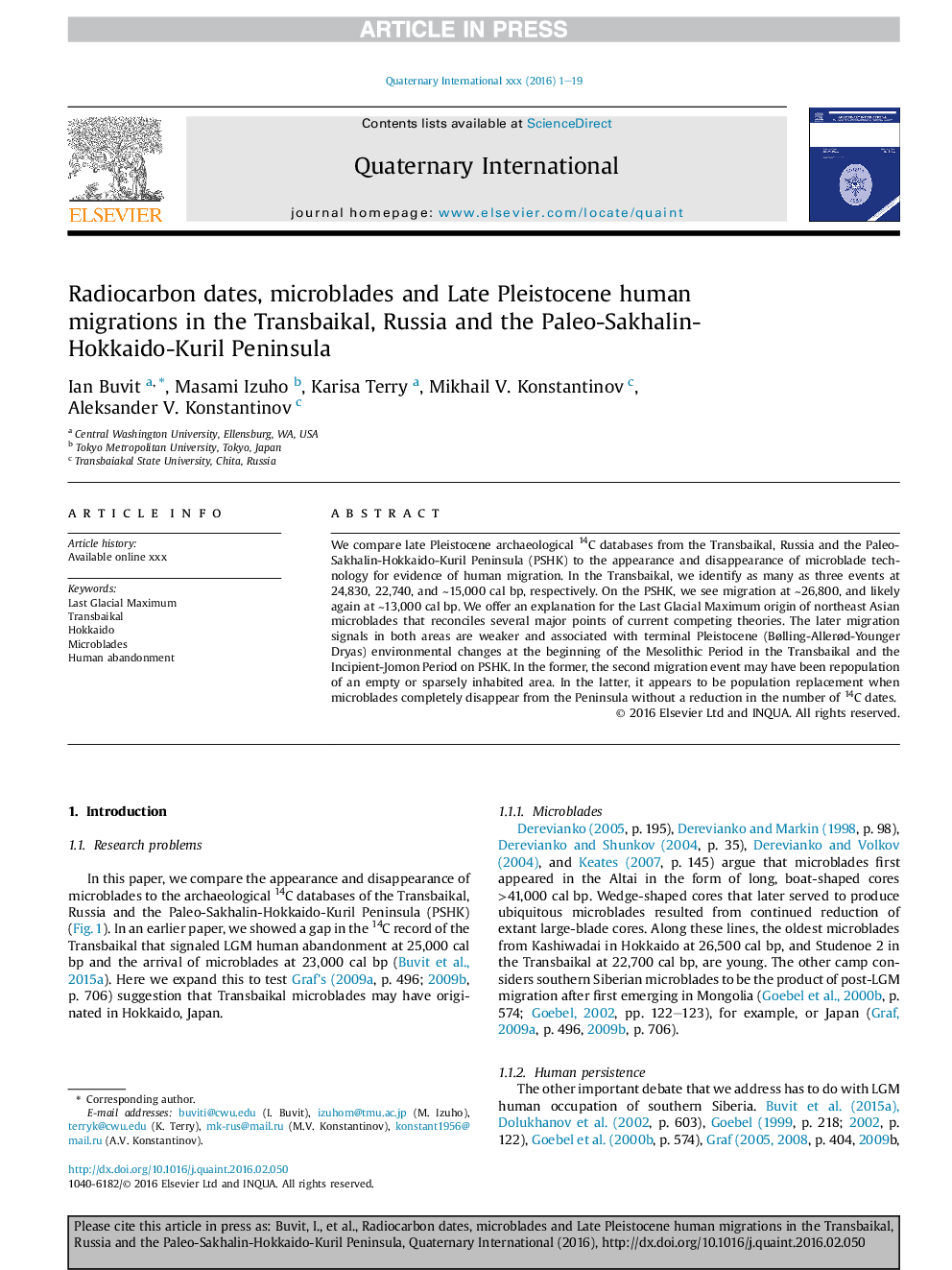| کد مقاله | کد نشریه | سال انتشار | مقاله انگلیسی | نسخه تمام متن |
|---|---|---|---|---|
| 5114007 | 1484082 | 2016 | 19 صفحه PDF | دانلود رایگان |
عنوان انگلیسی مقاله ISI
Radiocarbon dates, microblades and Late Pleistocene human migrations in the Transbaikal, Russia and the Paleo-Sakhalin-Hokkaido-Kuril Peninsula
دانلود مقاله + سفارش ترجمه
دانلود مقاله ISI انگلیسی
رایگان برای ایرانیان
موضوعات مرتبط
مهندسی و علوم پایه
علوم زمین و سیارات
زمین شناسی
پیش نمایش صفحه اول مقاله

چکیده انگلیسی
We compare late Pleistocene archaeological 14C databases from the Transbaikal, Russia and the Paleo-Sakhalin-Hokkaido-Kuril Peninsula (PSHK) to the appearance and disappearance of microblade technology for evidence of human migration. In the Transbaikal, we identify as many as three events at 24,830, 22,740, and â¼15,000 cal bp, respectively. On the PSHK, we see migration at â¼26,800, and likely again at â¼13,000 cal bp. We offer an explanation for the Last Glacial Maximum origin of northeast Asian microblades that reconciles several major points of current competing theories. The later migration signals in both areas are weaker and associated with terminal Pleistocene (Bølling-Allerød-Younger Dryas) environmental changes at the beginning of the Mesolithic Period in the Transbaikal and the Incipient-Jomon Period on PSHK. In the former, the second migration event may have been repopulation of an empty or sparsely inhabited area. In the latter, it appears to be population replacement when microblades completely disappear from the Peninsula without a reduction in the number of 14C dates.
ناشر
Database: Elsevier - ScienceDirect (ساینس دایرکت)
Journal: Quaternary International - Volume 425, 15 December 2016, Pages 100-119
Journal: Quaternary International - Volume 425, 15 December 2016, Pages 100-119
نویسندگان
Ian Buvit, Masami Izuho, Karisa Terry, Mikhail V. Konstantinov, Aleksander V. Konstantinov,